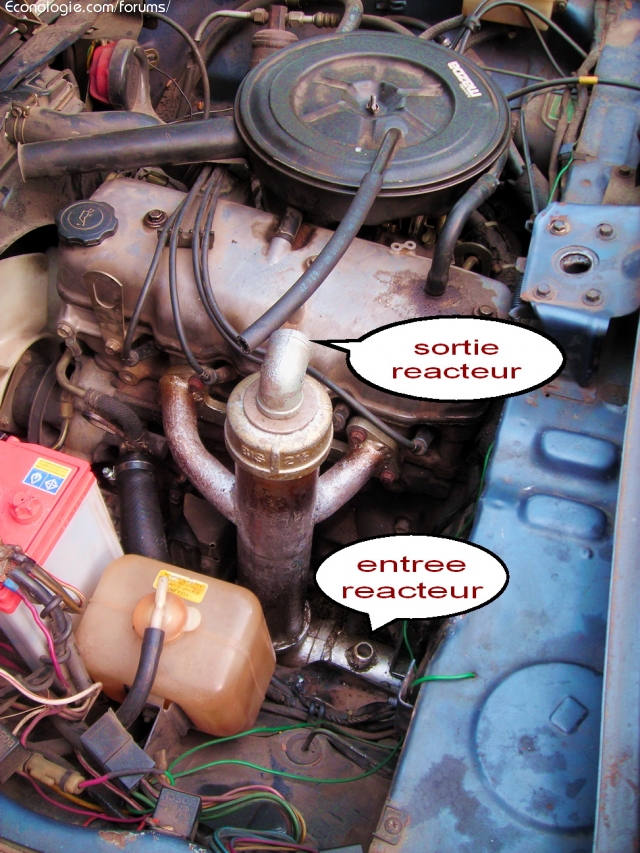Yael wrote: 1 ---- The GVI (as described in the assembly for 205 D which uses two coaxial tubes inserted in the exhaust and a constant level valve).
As explained then, it is in fact a boiler !!! javascript: emoticon (': frown:') And it must even damn boil given the temperature and the flow of the engine gases!
Also creating a strong pressure pushing (pure) steam into the reactor and the engine intake.
The GVI certainly provides a vapor of the same style as the bubbler. As I see it, in fact when the walls of the GVI exceed 100 ° under the exhaust gases, there is a phenomenon of heat build-up on the internal walls.
http://fr.wikipedia.org/wiki/Cal%C3%A9faction
Caléfaction (from the Latin calefacere: to heat) is a phenomenon of thermal insulation of a liquid compared to a heating surface having reached a threshold temperature Ts higher than the boiling point of the liquid Te. This phenomenon is due to the formation of a vapor layer between the heating surface and the liquid, making heat transfer much slower. When the surface temperature decreases (but remains between Te and Ts) there is a sudden boiling (cause of many explosions of boilers in the early days of the steam engine).
Drop in heating.
Hotdling is commonly seen when a drop of water falls on a hot plate. The drop appears to roll over the surface and does not vaporize immediately. Likewise, liquid nitrogen when spilled on a surface at room temperature forms droplets which roll over the surface.
The steam and the water mix together in the cramped space and there must come out a mist of water droplets in steam under a pressure of a few milibars. I suppose that in a wide temperature range of the exhaust, this operation remains "constant" except the water / steam flow which must vary with the depression of the engine.
But those who have mounted bubblers have said that the water should not be boiling or the reactor is malfunctioning? What seems contradictory to me ???
It is an experimental data which says that it works better without boiling .... the why ????
My question is: according to your experience what is the form of vapor to obtain?
As far as I know no one has managed to characterize this vapor scientifically. For my part I suppose that it is myriads of droplets of Xmicrons in diameter in a matrix of water vapor with a lifespan of some milliseconds.
2 --- will someone have a diagram (simplified) of a constant level valve (is it like the float system of a carburetor?). I need to understand how it works to find the equivalent here. Since heating valves are rare in Thailand and there are none in air conditioning !? Any idea what kind of device could use these valves ???
It works like a fuel. When the water level drops, the float and its needle drop, lets in the fleet which raises the float so closes the arrival. And off we go for a ride.
The only difference is the venting of the tank that you have to reconnect at the outlet of the reactor to balance the pressure.
Chui not at all sure that it is a good system, if the tank + reactor assembly is in slight overpressure, when the needle opens .... it will blow in the water inlet pipe instead of the let in .... with the vibrations of the pot and pressure variation in the reactor, it easily does anything except regulate the water level.




